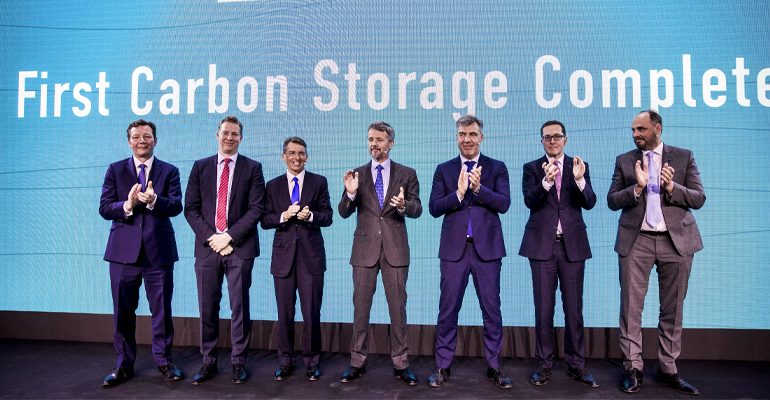In Denmark, HRH Crown Prince Frederik of Denmark has officially initiated a world first with the safe injection of carbon dioxide from Belgium into a depleted oil field in the Danish North Sea.
The Project Greensand pilot shows for the first time the feasibility of carbon dioxide (CO2) storage from being captured at an INEOS Oxide site in Belgium to being transported cross-border and finally safely and permanently stored in the INEOS-operated Nini field in the Danish North Sea.
The European Commission estimates that the EU will need to store up to 300 million tonnes of CO2 per annum by 2050 to meet its climate goals.
This is a big moment for Europe’s green transition and for our clean tech industry. The first ever full value chain for carbon capture and storage in Europe. You are showing that it can be done. That we can grow our industry through innovation and competition and, at the same time, remove carbon emissions from the atmosphere through ingenuity and cooperation. This is what Europe’s competitive sustainability is all about, said Ursula von der Leyen, President of the European Commission who participated virtually.
A key technology
Carbon capture and storage (CCS) is considered a key technology in reaching the Danish 2045 net-zero target.
Project Greensand is a consortium of 23 organizations with expertise in CCS, including businesses, academia, government, and start-ups, and is supported by the Danish state through the Energy Technology Development and Demonstration Program (EUDP).
By 2030, Project Greensand aims to store up to 8 million tonnes of CO2 per annum in this area while continuing to make significant contributions to the understanding and growth of carbon storage technology.
INEOS and Wintershall Dea are leveraging two decades of experience from oil production in the Nini West field and have extensive knowledge of the reservoirs being used, said Hugo Dijkgraaf, Member of the Management Board and Chief Technology Officer (CTO) of Wintershall Dea.
The CO2 injected into the Nini field is stored at a depth of about 1,800 metres below the seabed and will be closely monitored.
This important milestone firmly demonstrates that CCS is a technology that can deliver on a global scale. The task at hand for the industry and policymakers is now to support the continued development and deployment of CCS as an essential tool to mitigate climate change, said Sir Jim Ratcliffe, Chairman and CEO of INEOS Energy.



